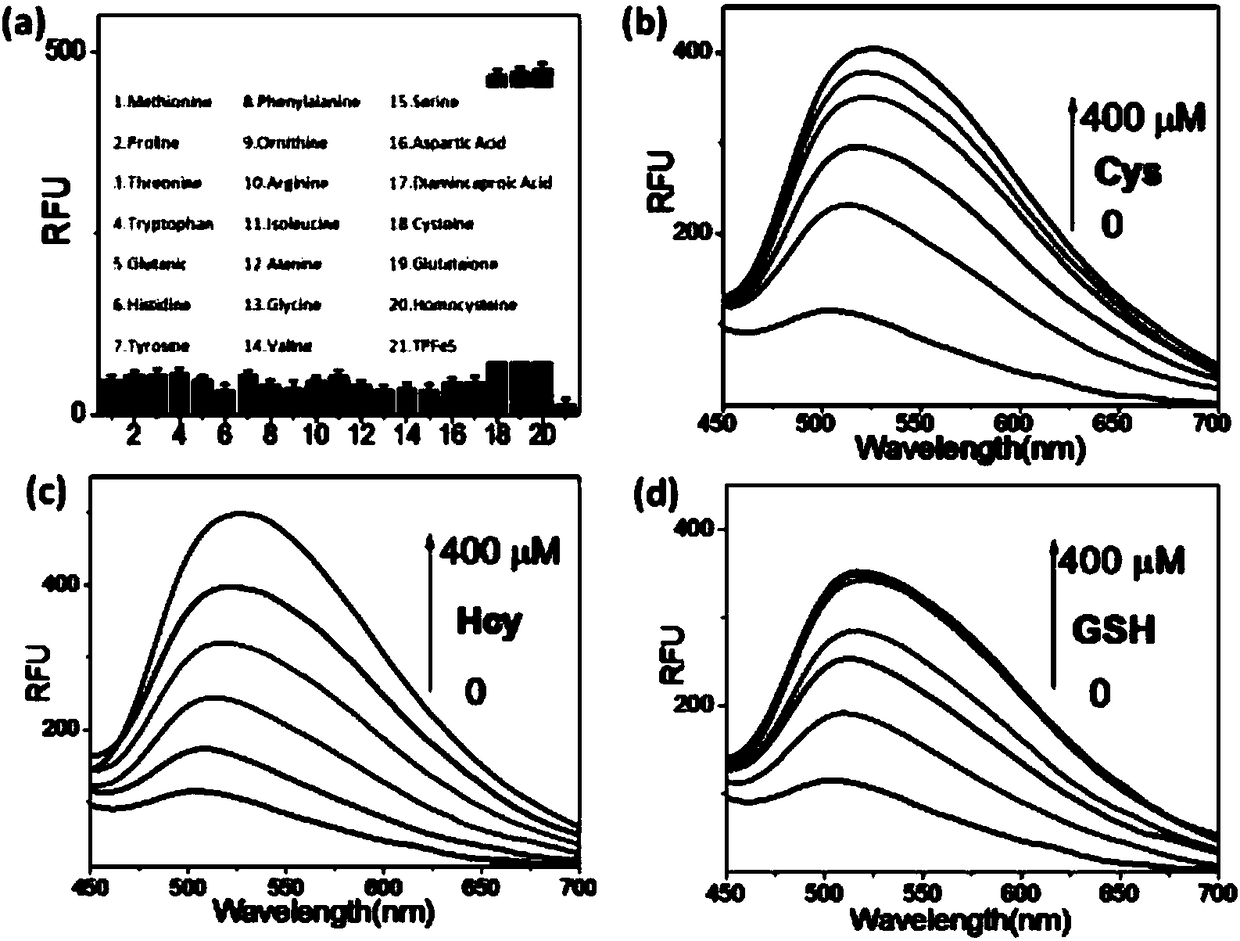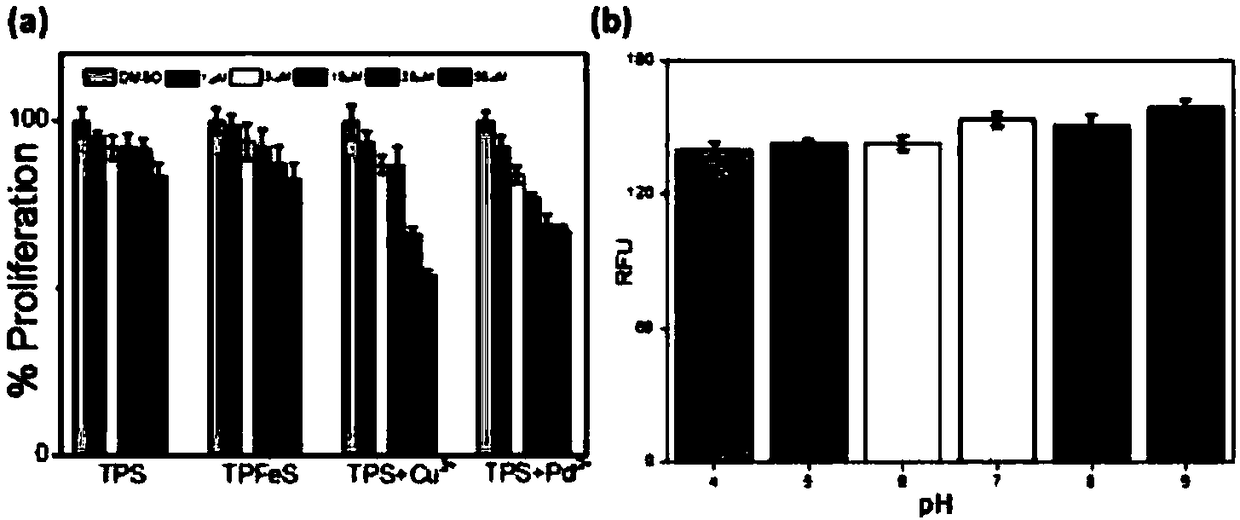Two-photon fluorescence probe for selectively detecting iron (III) complex in biological mercaptan
A two-photon fluorescence and biological thiol technology, which is applied in the field of two-photon fluorescent small molecule probes and two-photon fluorescent probes, can solve the problems of small types and quantities of two-photon fluorescent molecules, and achieve the effect of fluorescence recovery
- Summary
- Abstract
- Description
- Claims
- Application Information
AI Technical Summary
Problems solved by technology
Method used
Image
Examples
Embodiment 1
[0021] A two-photon fluorescent molecule that specifically recognizes biothiol molecules. Denoted as compound TPS, the structural formula is as follows:
[0022]
[0023] The preparation steps of compound TPS are as follows:
[0024]
[0025] Compound 2 (74 mg, 0.26 mmol) was dissolved in 4 mL of anhydrous DMF at room temperature, compound 1 (70 mg, 0.26 mmol) was added to it, and EDCl (99 mg, 0.52 mmol) was added, and after stirring for 24 hours, water was added to stop the reaction . The solution was washed with saturated sodium chloride solution, then extracted three times with dichloromethane. The organic phase was dried over anhydrous sodium sulfate, filtered and concentrated in vacuo. The filter residue was purified by column chromatography (PE / EA=4 / 1) to obtain pure TPS as a light brown solid with a yield of 32%.
Embodiment 2
[0027] TPFeS detects biothiol molecules in vitro, interference experiments on TPFeS probes.
[0028] First prepare the TPFeS solution in Hepes buffer with 0.1% Triton X-100, where TPS / Fe 3+ =2 / 1, add 1mL to 22 1.5mL centrifuge tubes respectively, add 2uL of 100mM amino acid aqueous solution prepared in advance to each of these centrifuge tubes, shake at room temperature for 2 hours, take 80uL and add to the enzyme label To test in the plate, the excitation light is 350nm ( figure 2 a), only three kinds of biothiol molecules have fluorescence-enhanced response to TPFeS; the statistical analysis of the experimental results shows that the probe TPFeS has significant specificity to biothiol molecules, and is not affected by other interfering substances such as amino acids. In subsequent cell experiments, the reaction of the probe with thiol molecules in the cells provided evidence.
Embodiment 3
[0030] In vitro concentration trend curves of TPFeS probe to three thiol molecules Cys(b), Hcy(c), and GSH(d). First, add TPFeS to the Hepes buffer prepared with 0.1% Triton X-100 to make the concentration reach 10uM, in which TPS / Fe 3+ = 2 / 1, divided into 1.5mL centrifuge tubes, respectively added three kinds of thiol molecules with different concentrations in the centrifuge tubes, shaken for two hours at room temperature, and took 80uL of enzyme in each centrifuge tube to 384 holes Tested in the standard board, respectively obtained figure 2 (b) (c) (d) curves, the fluorescence gradually increases with the increase of the thiol concentration, and a good linear relationship between the concentration and the fluorescence intensity is obtained.
PUM
 Login to view more
Login to view more Abstract
Description
Claims
Application Information
 Login to view more
Login to view more - R&D Engineer
- R&D Manager
- IP Professional
- Industry Leading Data Capabilities
- Powerful AI technology
- Patent DNA Extraction
Browse by: Latest US Patents, China's latest patents, Technical Efficacy Thesaurus, Application Domain, Technology Topic.
© 2024 PatSnap. All rights reserved.Legal|Privacy policy|Modern Slavery Act Transparency Statement|Sitemap



